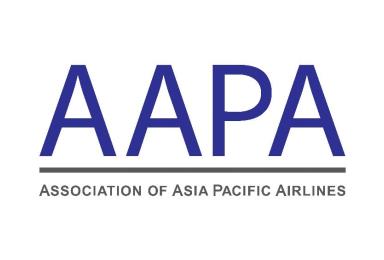KUALA LUMPUR, 18 November 2020: With cross border travel effectively grounded, the Assembly of Presidents of the Association of Asia Pacific Airlines (AAPA) focused on survival and continuity during their virtual meeting last Friday.
The Assembly concluded with AAPA, the International Air Transport Association (IATA) and Airports Council International Asia-Pacific (ACI Asia-Pacific), jointly declaring their solidarity and commitment to work with governments to revive air travel.

State of the Industry
The health crisis has triggered unimaginable losses for airlines exceeding USD84 billion worldwide this year. Asia Pacific airlines will account for more than a third of the losses or USD29 billion.
Among all regions, the fall in traffic is steepest in the Asia Pacific. The state of international air travel is particularly grim, with Asia Pacific airlines currently carrying less than 2 million international passengers per month, compared to 39 million a month in 2019. Seat capacity on international routes has accordingly fallen by 89% compared to 2019.
On a positive note, domestic travel is recovering well, with traffic in September reaching 67% of what it was a year ago while domestic capacity is already at 80%, benefitting from the timely relaxation of internal travel restrictions in some countries.
The air cargo market is even more resilient, reflecting relatively better demand for the transport of goods and supplies, and reached 83% of its 2019 level in September 2020, although the drastic decline in international belly hold capacity is constraining global supply chains.
Throughout the pandemic, Asian airlines have persevered to preserve basic mobility with repatriation flights as well as the transportation of essential cargo, food and medical supplies. The industry is resolute in adopting the ICAO CART guidelines and implementing objective risk management measures to safeguard the safety and wellbeing of travellers.
Covid-19 Impact
Covid-19 has had a devastating impact on the Asia Pacific travel and tourism sector, traditionally the fastest growing market, with most of the top-ten air travel routes in the world. Travel restrictions and blanket quarantine requirements by governments have severely inhibited international air travel.
Abrupt re-impositions of border closures by some countries due to the resurgence in Covid-19 cases have further dampened already weak demand. As a result, international passenger demand has remained at extremely low levels with little sign of any meaningful recovery as the year wore on.
After taking all possible means to avoid job losses including slashing flights, deferring aircraft deliveries, suspending all non-essential spending, freezing recruitment, offering furloughs and early retirement schemes, many Asia Pacific airlines are now announcing job redundancies. Some 1.8 million direct aviation jobs in the Asia Pacific are potentially at risk as the pandemic persists and borders remain closed. More broadly, the air transport sector accounts for 3.1% of Asia Pacific GDP underlining the wider impact of travel restrictions on communities and livelihoods in the region.
As the first region to be confronted with the Covid-19 pandemic, most borders in the Asia Pacific region have been effectively closed for several months, despite having achieved a relatively low infection rate. Unfortunately, uncoordinated and patchy travel restrictions and blanket quarantines are hampering the resumption and revival of air travel.
Efforts by governments to initiate green lanes, fast lanes and travel corridors have not provided much respite from the decimation of demand in the region, due to onerous requirements of such schemes. Nonetheless, the launch of the Singapore-Hong Kong travel bubble in late November is a positive step in the right direction.
Looking Ahead to 2021
It will take time for Covid-19 to abate and for a successful vaccine to be widely available. The industry must learn to adapt and reassure travellers that harmonised and sensible measures based on evidence have been adopted. A realistic path to gradually reopening borders could start with pairs of cities where the risk level is similarly low and the risk response equally robust, as recommended by the WHO.
Strong multilateral collaboration among governments to relax travel restrictions and quarantine requirements based on risk assessment and medical evidence, will be key to the restart and recovery of the aviation industry. Mutually recognised and harmonised measures such as comprehensive pre-departure testing protocols are actively being pursued as a way forward in reopening borders without onerous travel restrictions.
The Asia Pacific aviation industry continues to partner governments in efforts to harmonise cross border measures and rebuild confidence in air travel.
At the same time, the industry is sharpening its aviation and health safety response capability further, as well as its focus on established decarbonisation goals, in order to strengthen its resilience and adaptability for the future.
Commenting on developments, AAPA director general, Subhas Menon said: “Aviation is a global connector, playing a key role in social and economic development, that can be harnessed to spur global recovery from the pandemic. Countries that have largely contained the virus, will hopefully now turn their attention to opening up their borders and revitalising travel and tourism. The demand for cross border travel will return once the conditions are conducive, as has been seen with the rebound in domestic travel once restrictions were lifted.’’
“Resurgent travel and tourism would reinvigorate the global recovery effort. As one united aviation community, the industry has reaffirmed our shared mission to strengthen solidarity and cooperation with governments and other stakeholders, to contain the spread of Covid-19, revive air travel and secure its future contribution to positive social and economic development.’’






